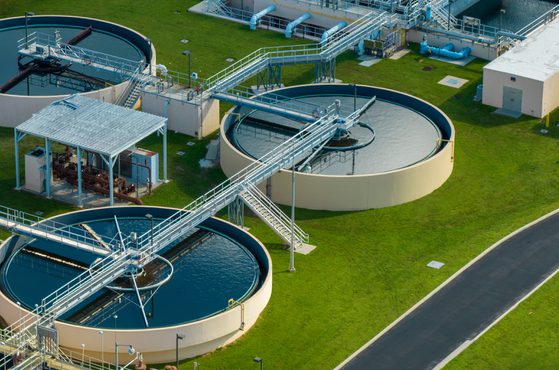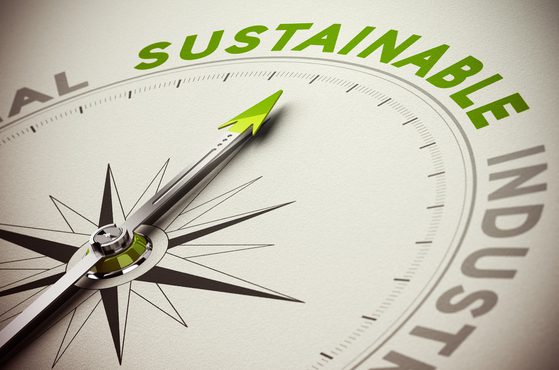Environmental penalties are changing — what regulated businesses need to know

We explore the proposed reforms to environmental penalties and what they could mean for enforcement, financial exposure and reputational risk.
Read more
We make the difference. Talk to us: 0333 004 4488 | hello@brabners.com
11 min read

The Law Society has published its eagerly anticipated guidance on 'The Impact of Climate Change on Solicitors’. While climate change has long been recognised as one of the global major risks to business, until now there has not been any express guidance on how that risk applies to law firms.
Here, we explore the implications of the guidance for both firms and lawyers.
The Law Society’s guidance is intended for its members and uses the umbrella term ‘organisation’ to refer to solicitor’s practices as well as law firms and in-house employers. Although the guidance states that the SRA is supportive of the guidance, it should not be interpreted as the SRA’s position on the matters.
Increasingly, clients are facing regulatory and market pressures to demonstrate that their suppliers (including their professional advisers) are adopting reasonable approaches to climate issues. In order to reduce their own climate impact, the guidance recommends that organisations first need to understand the greenhouse gas (“GHG”) emissions associated with their operations.
The emissions scopes under the GHG Protocol are:
However, the guidance states that for lawyers, the most significant GHG emissions are likely to be those associated with matters on which they advise (referred to as ‘Scope 4’ or ‘advised’ emissions), rather than Scope 1-3 emissions. While Scope 4 emissions are not currently included in the GHG Protocol, they are coming under increased scrutiny from clients and stakeholders.
Therefore, to get an accurate picture of their climate impact, organisations should go further than analysing their supply chains and procurement arrangements by considering the extent to which the matters on which they work may contribute towards emissions. This implies that organisations which act on behalf of more GHG-intensive clients will find it difficult to reconcile their advised emissions from such work with robust climate change commitments. This may also have implications for an organisation’s ability to attract new clients, who may be reluctant to instruct lawyers that are associated with existing GHG-intensive clients.
Linked to this, the guidance recommends that organisations should take care to avoid greenwashing (such as mischaracterising or overstating their targets or achievements) and refers to the Competition and Markets Authority’s Green Claims Code, which provides practical advice to organisations making environmental claims.
Climate change legal risks may potentially arise in a wide range of work undertaken by solicitors. Examples are set out in annex 2 of the guidance. This includes:
The guidance refers to four general duties of solicitors in the context of climate legal risks:
1. Duty to exercise reasonable care and skill.
This requires a solicitor to look beyond the narrow scope of an instruction to consider whether (and to what extent) climate legal risks are relevant.
2. Duty to warn about potential risks.
This requires a solicitor to point out hazards of a kind that should be obvious to the solicitor, but which the client may not appreciate. The character and experience of the client are among the relevant circumstances to be considered in determining the extent of a solicitor’s duty to warn. Whereas an inexperienced client will expect to be warned of climate risks that are (or should be) apparent to the solicitor but not to the client, a more sophisticated client may not require advice on climate risks from their solicitor. However, the duty to warn may be enhanced in the case of a client business that is subject to climate change and/or human rights commitments. In other words, solicitors will need to tailor their approach to warning about climate risks for each of their clients.
3. Duty to disclose.
This requires a solicitor to pass on to their client all information material to that matter of which they have actual knowledge. In the context of climate change, this means that if a solicitor becomes aware in the course of acting on a retainer that there are climate change risks which might impact a client’s interests, they should disclose such risks in a clear and understandable way. Again, a solicitor will need to adapt how they disclose information, depending on the client. For sophisticated clients with in-house climate change expertise, passing on a technical report may suffice — for others, the information may need to be disseminated more carefully.
4. Duty to ensure that the service provided is competent and delivered in a timely manner.
This includes a requirement to maintain the level of competence and legal knowledge required to practice effectively, work within the level of their competence and know when to seek expert or additional advice. Solicitors will therefore need to develop their understanding of how climate legal risks impact upon their practice area and be prepared to liaise with their client about seeking specialist third party assistance where required. As with many specialist areas of law (such as sanctions or date protection), it’s likely that — as an absolute minimum — solicitors will need to know enough about climate risks to understand when they need help.
The guidance suggests that there may be circumstances where organisations may justifiably decline instructions on climate change grounds. It notes that solicitors are not obliged to provide advice to every prospective client and that they have wide discretion in choosing whether to accept instructions. Climate-related issues may be a valid consideration in determining whether to act.
To avoid potential greenwashing, organisations may need to evaluate whether it is consistent to accept instructions to advise on matters that are incompatible with its climate change commitments. Furthermore, an organisation’s ability to attract and retain employees may be affected by its approach towards climate change and the nature of the work undertaken.
The SRA’s principles are also relevant in this context.
For example, SRA Principle 2 requires that solicitors act in a way that upholds public trust and confidence in the profession. The guidance notes that public attitudes towards social issues evolve over time and what may previously have been acceptable may no longer be so. It suggests that climate change is one such issue and so acting on instructions that may have a clear adverse effect on the climate might damage the standing of the profession, therefore justifying an organisation not acting.
Furthermore, SRA Principle 5 requires solicitors to act with integrity. The guidance states that solicitors may decide that they cannot act (or continue to act) where a client is wilfully or recklessly making misleading claims about their organisation’s climate impact or established climate science.
There is a tension between the principles referred to above that support an organisation declining instruction and the principles of access to justice and the right to legal representation, which are fundamental aspects of our legal system. The guidance states that organisations may work with clients that are proactively engaged in transition planning. Arguably, organisations may consider that they are justified in working with clients with a history of emissions-intensive operations if this assists them to become a more sustainable business and reduce their emissions.
Where organisations decide not to accept an instruction, they should provide their reasoning to prospective clients in writing.
The guidance notes that a commitment to climate change may be treated as a philosophical belief and therefore a protected characteristic under employment law. On this basis, the suggestion is that an individual fee earner or other employee could legitimately refuse to act for a particular client or in relation to a particular matter for climate change reasons. This could occur, for example, where the client operates an emissions-intensive business and/or a transaction or litigation would contribute towards increased emissions. Clearly, this is an area that organisations will need to manage sensitively in conjunction with their human resources teams to clearly communicate their position to staff.
The guidance notes that a solicitor may, by agreement with the client, limit the terms of the retainer to reduce the scope of their duties. This may be the case where the solicitor is not competent to advise or where the client is directed to more expert technical advice. Such an arrangement should be on the basis of the client’s informed consent (which requires an explanation of the relevant issues) and be confirmed in writing. Such exclusions are not uncommon and client engagement letters often carve out advising on issues such as tax and non-UK law from the scope of the retainer.
However, the guidance suggests that — where climate legal risks are relevant — it is becoming less realistic (in practice) to exclude consideration of such measures from the instruction completely, given that they impact so many areas of activity. Clients may not be prepared to accept such carve-outs from the retainer. On this basis, law firms will need to decide either not to act (on the basis of lack of competence) or to develop a capability to advise on climate change issues (either within the firm or by developing an arrangement with another law firm or consultancy that can provide the requisite support).
As the guidance observes, in-house lawyers cannot limit their advice through the scope of a retainer. Therefore, they need to be proactive in raising questions about the sustainability of business models and alignment to climate pledges made by their organisations. Employers may be more exposed to the commercial consequences of climate change impacts (including climate legal risk) if their in-house lawyers do not warn of climate legal risks. Therefore, in-house lawyers may need to develop a broad understanding of climate risks to provide holistic advice to the organisation.
A solicitor that does not have the relevant knowledge of climate change on the legal area they are advising on should not advise on it. In such circumstances, they should consider professional training to develop competence.
As training and awareness develops, an expectation may arise that a reasonably competent solicitor should be aware of the impact and the relevance of climate change to their practice area and be able to advise clients accordingly. This is particularly true of in-house lawyers.
Furthermore, solicitors should be mindful of current and prospective requirements of professional indemnity insurers so that they can obtain affordable cover.
The guidance states that further sector specific guidance on particular areas of law will be published addressing how solicitors should advise clients on climate change legal risks. It will be interesting to see how the basic themes in the current guidance are expanded and clarified in the further guidance.
Despite the clear risks associated with climate change, it is also clear that there are opportunities for organisations to take the initiative by developing clear internal strategies (for example, developing a capability to advise on climate change issues and reducing advised emissions) in order to better advise clients and generate more business.
It is difficult to imagine that this guidance — which leaves the door open to law firms to decline instructions and fee earners to refuse to undertake work for climate change reasons — could have been published a decade ago. Today, however, nothing in the guidance appears to be particularly surprising. Nevertheless, the guidance is highly useful in drawing together various strands associated with how climate change impacts upon legal practice. It also acts as a useful reminder to demonstrate how public attitudes shape professional standards, as well as how both evolve over time. Ultimately, the guidance reflects how high on the public agenda climate change has risen.
Find out more about our approach to sustainability and B-Corp status.

We explore the proposed reforms to environmental penalties and what they could mean for enforcement, financial exposure and reputational risk.
Read more

Some tech businesses are exploring how their commercial frameworks could evolve through smarter, values-driven contracting.
Read more

We explore the economic case for regeneration and outline three key areas that can help to get deals done and accelerate progress.
Read more